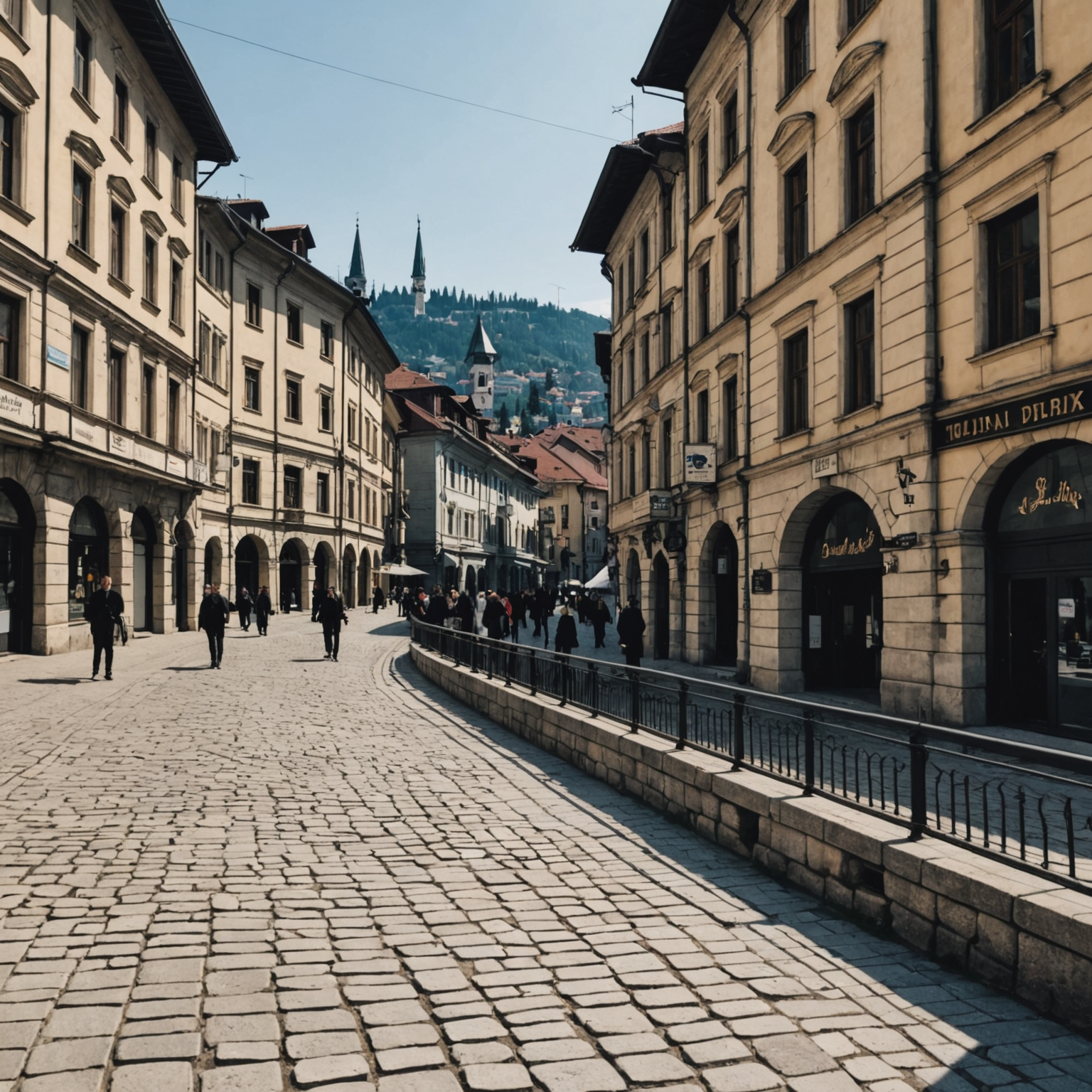How one wrong sandwich started a world war
 The corner of Franz Joseph Street and the Latin Bridge in Sarajevo, where Gavrilo Princip shot Archduke Franz Ferdinand—not because of a sandwich, but due to a fateful wrong turn.
The corner of Franz Joseph Street and the Latin Bridge in Sarajevo, where Gavrilo Princip shot Archduke Franz Ferdinand—not because of a sandwich, but due to a fateful wrong turn.
The Sandwich That (Almost) Started World War I
The surprising truth behind a famous myth—and how a simple mistake changed history
By Peter Teoh, Science Writer
You’ve probably heard the story: On June 28, 1914, a young man named Gavrilo Princip was eating a sandwich in Sarajevo when, by pure chance, the Archduke Franz Ferdinand’s car pulled up right in front of him. Seizing the moment, Princip pulled out a pistol and shot the Archduke and his wife, sparking World War I. It’s a tale so dramatic it sounds like something from a movie—and, in fact, it’s been repeated in schools, books, and even TV shows. But here’s the catch: the sandwich part isn’t true[1][3][5]. So, what really happened on that fateful day, and how did this tasty myth take hold?
What Actually Happened in Sarajevo?
On that summer morning, Archduke Franz Ferdinand—heir to the Austro-Hungarian Empire—was visiting Sarajevo with his wife, Sophie. A group of young nationalists, including Princip, wanted to assassinate him to protest Austro-Hungarian rule over Bosnia. Earlier that day, another conspirator had thrown a bomb at the Archduke’s car, but it missed, injuring others instead[4]. The royal couple continued to a reception, then decided to visit the hospital to check on the wounded. Because of a mix-up, their driver took a wrong turn and ended up on Franz Joseph Street, right in front of Princip, who was standing near Moritz Schiller’s Delicatessen[1][3].
Princip didn’t hesitate. He fired two shots, killing Sophie and fatally wounding the Archduke. The assassination set off a chain reaction: Austria-Hungary blamed Serbia, alliances were invoked, and within weeks, Europe was at war. The conflict would eventually draw in countries from around the globe, becoming World War I—one of the deadliest wars in history[3].
The Birth (and Death) of the Sandwich Myth
So, where did the sandwich come in? The story goes that Princip, thinking the assassination plot had failed, went into Schiller’s Delicatessen for a snack. As he was eating, the Archduke’s car appeared, and Princip seized his chance. It’s a great story—full of irony and coincidence—but it’s not supported by any evidence[1][2][5].
At his trial, Princip never mentioned eating anything, and no witness reported seeing him with food. In fact, sandwiches weren’t even a common snack in Sarajevo in 1914. Locals were much more likely to eat burek (a savory pastry) or pljeskavica (a type of burger) than a sandwich[1][5]. The myth seems to have started in the late 20th century and gained traction in English-speaking countries, where sandwiches were (and are) a popular lunch food. By the 2010s, it had become a “fact” taught in some schools, despite having no basis in historical records[2][5].
Why Does the Myth Persist?
Good stories stick, especially when they’re dramatic and easy to remember. The idea that a world war began because someone was in the right place at the right time—and maybe a little hungry—is irresistible. It’s been repeated in documentaries, articles, and even TV shows like Fargo[3]. But historians agree: the real story is just as fascinating, and it’s a reminder of how small mistakes and miscommunications can have enormous consequences.
The next time you hear about the sandwich that started World War I, you’ll know the truth: Gavrilo Princip wasn’t munching on a snack when he changed history. The real cause was a wrong turn, a failed bomb, and a moment of opportunity. As for the sandwich? It’s a tasty bit of fiction—one that shows how myths can grow from the smallest details, even when the facts are even more surprising.
Side Notes
- Burek is a flaky pastry filled with meat, cheese, or spinach, popular in the Balkans.
- Pljeskavica is a grilled meat patty, similar to a hamburger.
- The building where Princip stood is now the Museum of Sarajevo 1878–1918.
- World War I led to the deaths of over 16 million people and reshaped the modern world.
Trending Sidebar
Did You Know?
- The Latin Bridge in Sarajevo is now a tourist attraction, marked with a plaque about the assassination.
- The term “Gavrilo Princip’s sandwich” has been used humorously to describe unlikely causes of major events.
- Some historians argue that even without the assassination, tensions in Europe might have led to war eventually—but the “spark” in Sarajevo made it happen faster.
Leave a comment